[Heads up! COROS has now released the Pace 2, which is a significantly more powerful watch than the Pace 1…but at the same awesome $199 price. Check out my full review here on that instead.]
How on earth is it almost March? Holy cow, time has flown by. I had intended to write this the week after the Tour Down Under, but somehow tomorrow is the last day of February.
In any case, back at CES, I picked up an early beta unit of the COROS Pace GPS watch, aimed at triathletes and priced at $299. This is made by the same company as the COROS helmet I use, which represents a pretty significant shift in direction. Or perhaps more accurately, expansion. The next day during a layover in Washington DC, I took it out for a run and put together the below video:

But since then I’ve been using it occasionally on rides, runs, and even a swim. It’s worthwhile chatting about, because it definitely represents what I think will be a common theme of 2018 for watches and bike computers alike: Otherwise unheard of newcomers coming into the market in surprisingly strong fashion to challenge the incumbents.
Note that the COROS Pace is currently slated to launch for orders in late April (and ship at the same time), which is a slight pushback of their mid-late March initial timeframe from CES. Still, let’s dive into things as of where the firmware on the beta devices I have stands today.
The Tech Specs:
In many ways the COROS Pace looks and acts like a more basic Garmin Forerunner 935 (or FR735, same-same). It’s designed to cover all three core sports in triathlon: Swim, bike, and run – and both the indoor and outdoor variants of each. That’s somewhat notable since most sub-$300 watches (priced at launch) don’t actually permit tracking of openwater swims. Nor do they have multisport mode, which allows you to string together swim/bike/run into a single activity (such as during a race).
It’s probably best to briefly glimpse the official spec sheet for the COROS Pace, partially because it makes it quicker to show you specs, and partially because I think it’s handy to have a screenshot of it.
Much of these specs are pretty commonplace in GPS watches. For example, you’ll find an optical HR sensor on the back of it. This optical HR sensor is used for both workout tracking, as well as 24×7 HR tracking. Like other sensors, it’s always glowing green (though, not super-green, so it’s hard to photograph):
Then there’s the accelerometers, which are used for step tracking as well as cadence in running. Again, fairly commonplace. However, the inclusion of a barometer is a nice touch for a sub-$300 multisport/outdoors watch. Up till now that’s mostly only seen on higher-end watches, or more inexpensive activity trackers (for stair counting) that aren’t multisport (making it an odd grey area).
The one other notable item here is the battery life claim. While not listed up above, the company has claimed 30 days of standby battery life, along with 30 hours of active GPS-on battery life. Both of those are pretty substantial claims, and I’m interested to see how they shake out once they get final firmware on them. I’ll say that in standby mode the unit does seem to hold battery charge remarkably well, but I haven’t tested it in any scientific manner yet (mostly because most companies, even Garmin, don’t do much in the way of battery work till almost the end of the product development cycle). Below, their brochure from CES, showing the battery life claims. I confirmed earlier today those claims are still their plan.
When it comes to buttons and displays, the unit has four buttons, two on each side. This isn’t bad, but it’s not quite as efficient as the five-button layouts we see on Suunto, Polar, and Garmin watches. The reason is when you lose the center button on one side, you lose the ‘enter/select’ choice in between the up/down buttons. So your speed of menus is degraded a bit. Certainly nitpicking of course, as it doesn’t matter much once in an activity.
The band/strap is removable, but at present no quick release kit is offered. You simply use a tool to remove the pole (and thus, the band). The material is fairly stiff though, more so than any other watches I have floating around my desk right now. The company says that the next unit I receive (pre-prod or final) should have a much more comfortable band though.
When it comes to sensors, the unit supports ANT+ & Bluetooth Smart sensors (per the specs). However, at present neither has been enabled in the current beta builds. There was a pairing menu back in January, but the more recent firmware updates have made that disappear. That’s typically done by companies as they near release, to clean-up things that won’t be done at launch. I’ve shot over a note getting clarity on that specific piece and timing there.
The unit pairs to your phone using Bluetooth Smart, which is currently enabled and functional. The pairing process is super clean and easy, just like the Wahoo bike computer pairing process where you use the mobile app to scan a QR code on your watch:
A second later, and it’s paired. Love it.
From there it’ll sync steps, heart rate and workouts to the mobile app. You can also do some super-basic configuration of things from the mobile app (not much, but a handful of items). You can also look at your activity totals for the day, which nearly identically mirror Apple’s designs.
For example, you can enable/disable certain types of push notifications, as well as set the alarms and which arm you’re wearing it on. I found it somewhat interesting that it lists an option for the ‘Preferred Activity Tracker’. First, because that’s the exact same wording Garmin uses. But more interestingly – COROS only has a single activity tracking device announced (this, the Pace unit), as such, this feature is used when you have more than one product in the market. Thus…hmm, a hint of the future?
Back on the watch, the unit has the concept of widget pages, where you can find details from the compass, barometer, your current heart rate, calories, smartphone notifications, and time of day/clock/steps watch face:
In any case, there’s a few features that aren’t on the watch today that the company says are coming, along with some timelines. They are as follows:
By launch: Adding in Triathlon Mode, Set Heart Rate Reserve & Max Heart Rate, Lactate Threshold, VO2Max, and customizable data pages. Also, adding in Interval Training features for both running and cycling. Support for ANT+ Speed/Cadence/HR sensors.
May: Cross-country Race Mode, Climbing Mode, 3D Distance Function, “Dynamic running”. Support for ANT+ Power Meters.
I’m not super clear what ‘Dynamic Running’ mode is. There’s a little bit of a lag between some of the development which occurs in China, versus their US home-base counterparts, and so once I get clarity on that I’ll update accordingly.
Using it training:
Heading out on the road (or water as it may be) is fairly straightforward. To start you’ll press the lower left red button, which opens up the sport menu. It’s here that you can select the sport mode you intend to use. It’s also where you can access settings, history, and control music on your phone (it doesn’t have music storage itself).
Once you select a sport the watch will go off and find satellites as well as acquire your heart rate. It’ll chirp as it acquires each one, as well as show you the status of that on the screen.
Additionally, you can scroll down to configure basic settings like auto lap and auto scroll. I expect over time this section will get more features as they enable things noted earlier.
Once that’s all done you’ll tap that start button and be off. At this point it’s kinda like most other GPS watches. You can press up/down to change data pages (which will be customizable by launch, but aren’t on my beta unit), as well as use auto scroll to automatically change the pages. Here’s a quick higher-quality resolution gallery of all of the current data pages:
And a less than awesome GoPro shot while actually running:
And while cycling:
At present you can configure auto-lap, but they haven’t enabled manual laps in the beta. But lap metrics are shown on the data fields, as well as afterwards in a nice and tidy summary menu.
Overall, while running, things seem to work fairly well. Same goes for cycling. However, right now it’s tough for me to make detailed comparisons on any element of accuracy, because they haven’t enabled a way to save files, except exporting to Strava. And unfortunately there’s a bug in the app where my runs won’t go to Strava but my rides will. So I was able to export out that ride and then re-upload it to the DCR Analyzer. When I do that, the tracks align perfectly with a slew of bike units I was using.
If I take a less analytical approach for the runs, I can compare the images of the tracks produced in the app though. It’s not a perfectly scientific way of doing it, but it allows me to zoom in and see how close the tracks match. Though in this particular run, there’s really no need to compare, you can see it’s near perfectly along the beach bike path (compared to a Garmin FR645):
Also, the app has plenty of metrics for each run. I’d like to point out how flippin’ increda-stable I was on this run, especially given the temp was a gazillion degrees outside.
If I go back to tracks for a second, if I look at my DC run, it’s perfectly on the paths, even when I went in and out of a statue to take my Strava pic, it nails that (right screenshot, to the right edge of the pond).
I’d argue the GPS accuracy is quite impressive at this point. But I won’t make a final statement on accuracy until I have files that I can actually overlay against other units. For HR accuracy, it seems pretty reasonable and close, but again, I can’t compare the HR plots atop each other, so the jury is out there.
As for swimming, you start that the same way as other sport modes.
And then while swimming you can check your distance and pace. Basically, the same as any other watch.
Afterwards, if I look at the track, it’s not quite as stable as some that I’ve seen. It’s not horrible, but it seems to struggle a little bit when I put the watch underwater for extended time periods (I saw this exact same thing with early versions of the Suunto Spartan series a few years back). That said, it handily beat the Spartan Trainer I had on my other wrist, which made it appear I was drinking heavily prior to the swim. At left, track from COROS Pace, and at right, Suunto Spartan Trainer. I will note that historically I’ve had better luck with the Spartan Trainer and openwater swims. So this specific swim is an oddity.
In case you’re wondering, here’s my actual track, as recorded by a GPS watch atop my swim buoy:
I’m not super concerned yet on the GPS accuracy of the openwater swims, since that’s a bit more complex and it wasn’t really horrible anyway. I generally assume most GPS watches during openwater swimming (with it on your wrist), will be +/- 10%. That’s in-line with that.
Finally, I do want to note that initially the company didn’t have it on their radar to allow you to export files (I.e. .FIT/.TCX files), and rather, only uploads to Strava and perhaps other 3rd parties. In short, I politely explained to them that if they didn’t allow access to files, I’d in turn strongly recommend not buying it (since I firmly believe you should always be able to access your own workout files in an open/standard fitness format). Good news: They changed their mind.
The newly updated plan now calls for them to add in support for downloading a .FIT file via e-mail from the app. Additionally, they plan to add in support for TrainingPeaks and Today’s Plan. All of which will be done by April. They’re still hesitant on allowing you to plug-in your device and access the files that way via USB, which is something I think is still really important. But at least we’re making progress here.
They do seem fairly open to changes and feedback – so certainly if you’ve got that, the comments would probably be a good place to utilize those Mavis Beacon typing skills.
You might also be drawing some comparisons to the Hammerhead Karoo (obviously that’s a cycling unit), in terms of being a new player in the market and features/price compared to existing players. I think there’s certainly some similarities, but the key difference is that COROS plans to ship at time of order (or, within a week or so). Versus a crowd-funded unit that’s almost a year from time of order. Also, in the case of the Karoo, I wasn’t able to use it as a day to day unit until 7 months after announcement. Whereas this I’ve already had for almost two months and it largely has the core functionality quite functional.
Wrap-Up:
So what’s my gut feeling on this? Surprisingly good – but with a few caveats. First, it’s worthwhile noting the elephant in the room: This is a carbon copy of a Garmin FR735/FR935. The widget charts, the type fonts, even some of the sport mode icons are identical. Same goes for the overall unit design. Clearly someone was shipped a few FR735/935 units and told to make something that looks like it. Of course, that’s honestly the easy part of building a GPS watch. The hard part is things like accuracy, which even Garmin struggles with from time to time. At present, things look quite good on COROS for GPS accuracy, but I don’t have enough data to determine HR data accuracy.
The real question I think is on the pricing. Right now it’s slated to open at $299 (for any of the three colors), which is inclusive of the optical HR sensor. But I’m not sure that’s going to move units at that price. First, you’ve got Suunto selling the very capable Spartan Trainer Wrist HR at $279, which is far more functional in terms of features. It’s got a known-good of an optical HR sensor in it too (though, it lacks the barometer the Pace has). It’s got lots of navigation features that the Pace is missing. But it’s from a major name-brand people know and trust. That has pricing value.
Second, the reality is that Garmin offers the FR920XT for $250 today, and often $199 on sale. That’s an incredibly powerful and popular triathlon watch that’s known the world around. And even Polar floats in the $300 range with the older V800 too, also triathlon focused. All of which ignores the reality that Garmin (and others) often/historically put on sale triathlon-focused units in early May…right when COROS intends to launch. We know that historically Garmin is happy to twist the knife on pricing at other peoples’ product launches.
So what is the right price here? I think $229 is appropriate for this year for Pace. At least until they build out more advanced features. I think they should basically just ‘own it’ from a pricing standpoint in terms of being a lesser known but potentially very capable triathlon watch. Sorta like what Polar did years ago with the M400 GPS watch at $160 (when Garmin has similar features for $300+).
If they launch with the product and early-level accuracy I see today (combined with the features they’ve committed to by April), at a $229 price-point, they’ll have a dominant winner on their hands. Here’s to hoping!
With that – thanks for reading!
[Note: With the COROS Pace 2 now out, there’s zero reason to buy the COROS Pace 1 at the same $199 price as the COROS Pace 2. Thus, I’ve linked the Pace 2 instead below, my full Pace 2 review is here.]
Found This Post Useful? Support The Site!
Hopefully you found this review/post useful. At the end of the day, I’m an athlete just like you looking for the most detail possible on a new purchase – so my review is written from the standpoint of how I used the device. The reviews generally take a lot of hours to put together, so it’s a fair bit of work (and labor of love). As you probably noticed by looking below, I also take time to answer all the questions posted in the comments – and there’s quite a bit of detail in there as well.
If you're shopping for the COROS Pace 2 or any other accessory items, please consider using the affiliate links below! As an Amazon Associate I earn from qualifying purchases. It doesn’t cost you anything extra, but your purchases help support this website a lot.
And finally, here’s a handy list of accessories that work well with this unit (and some that I showed in the review). Given the unit pairs with ANT+ & Bluetooth Smart sensors, you can use just about anything though.
And of course – you can always sign-up to be a DCR Supporter! That gets you an ad-free DCR, access to the DCR Shed Talkin' video series packed with behind the scenes tidbits...and it also makes you awesome. And being awesome is what it’s all about!
Thanks for reading! And as always, feel free to post comments or questions in the comments section below, I’ll be happy to try and answer them as quickly as possible. And lastly, if you felt this review was useful – I always appreciate feedback in the comments below. Thanks!



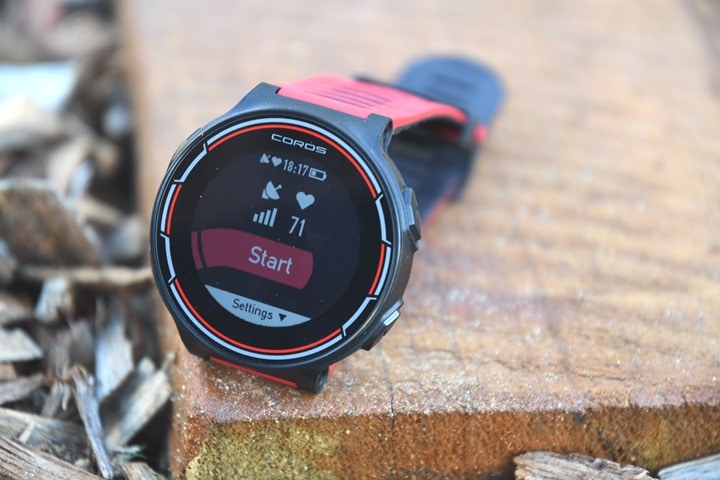



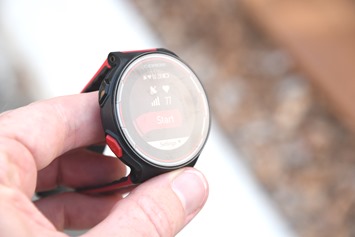

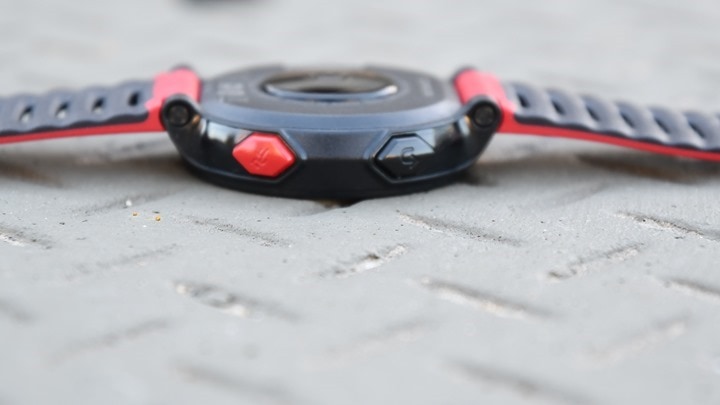
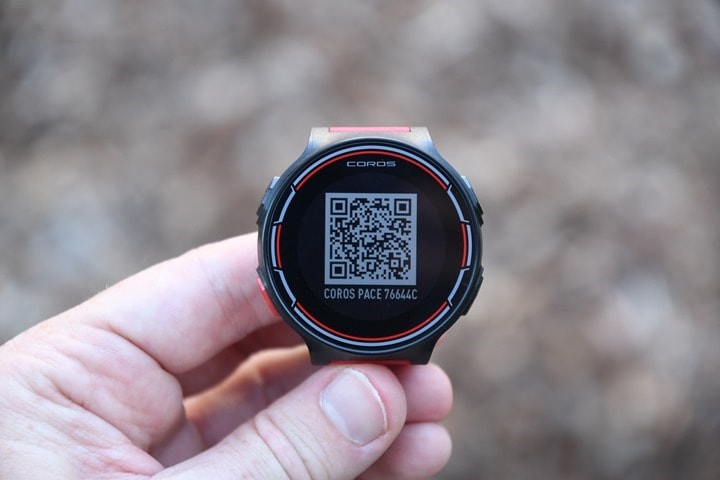
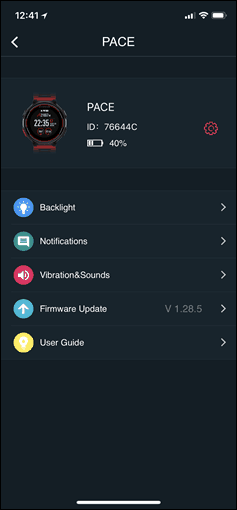
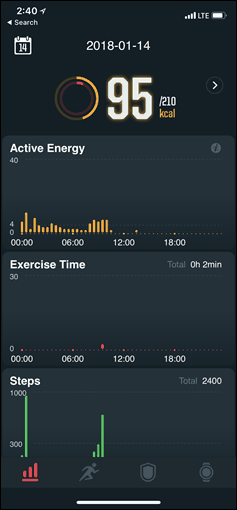
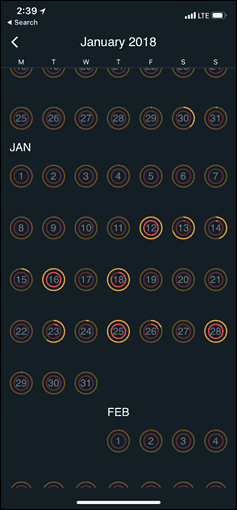
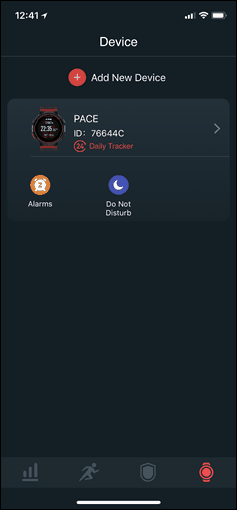

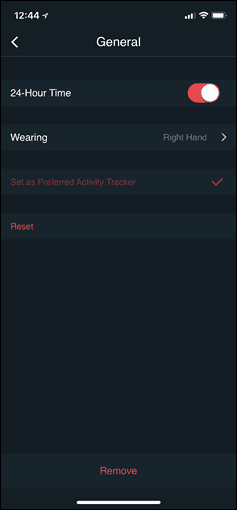
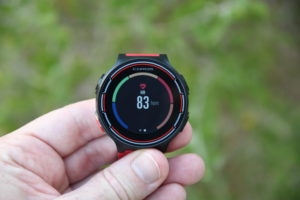
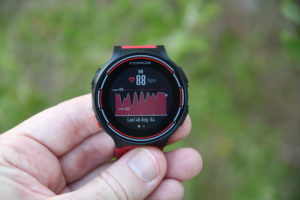
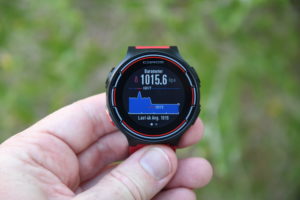
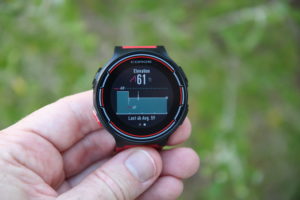
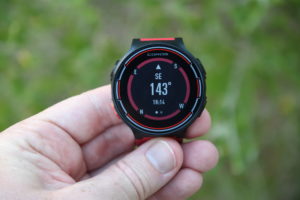
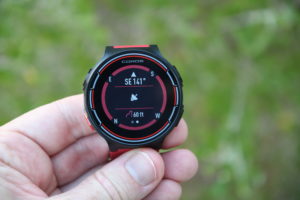
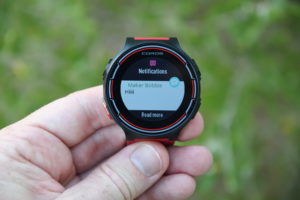
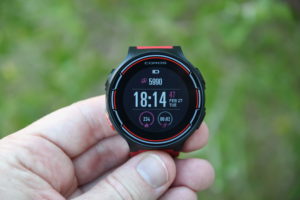

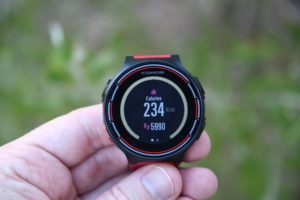
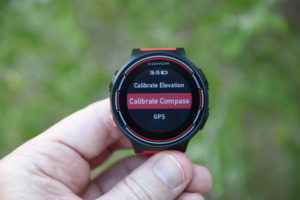
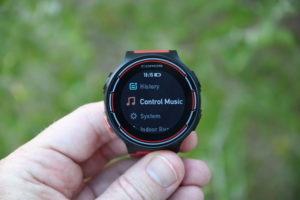
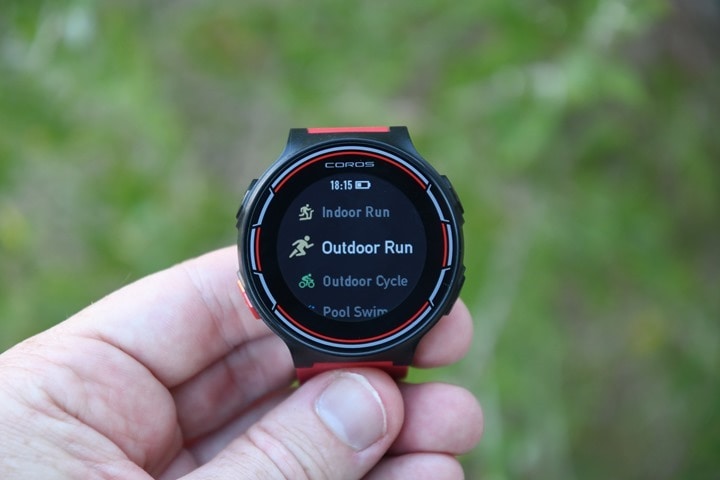
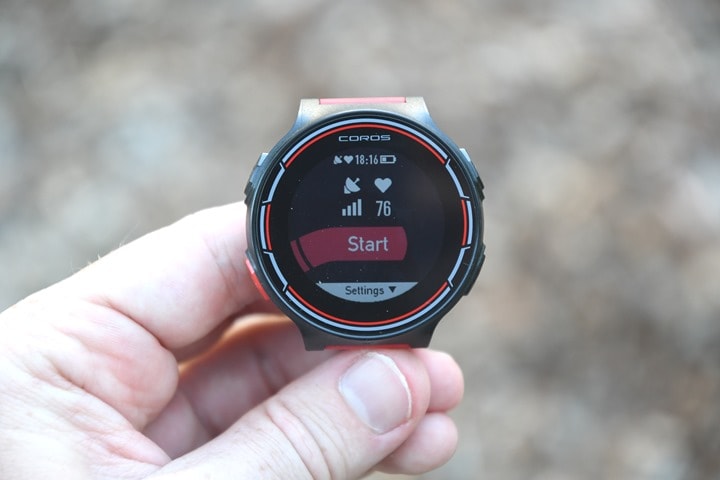
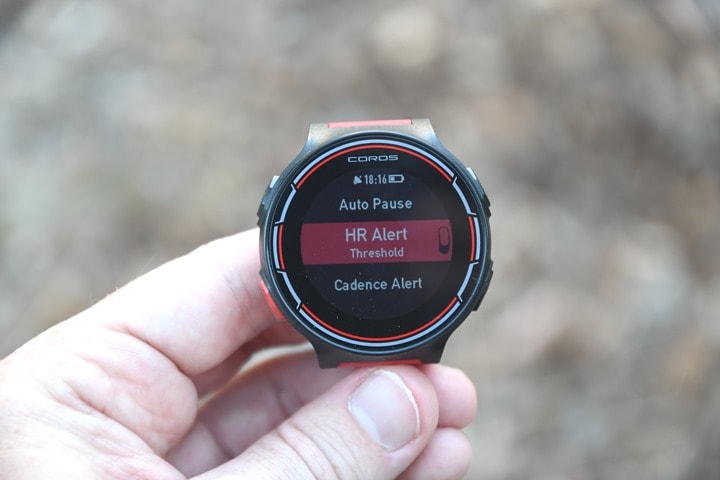

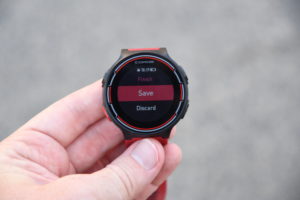


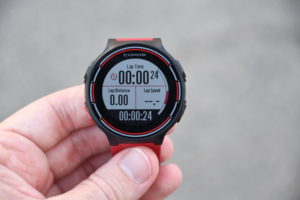
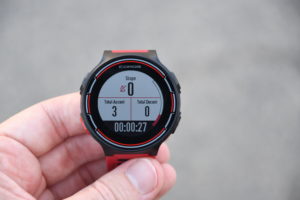
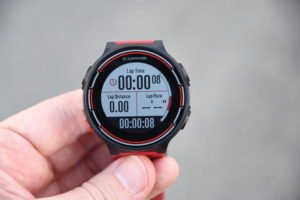

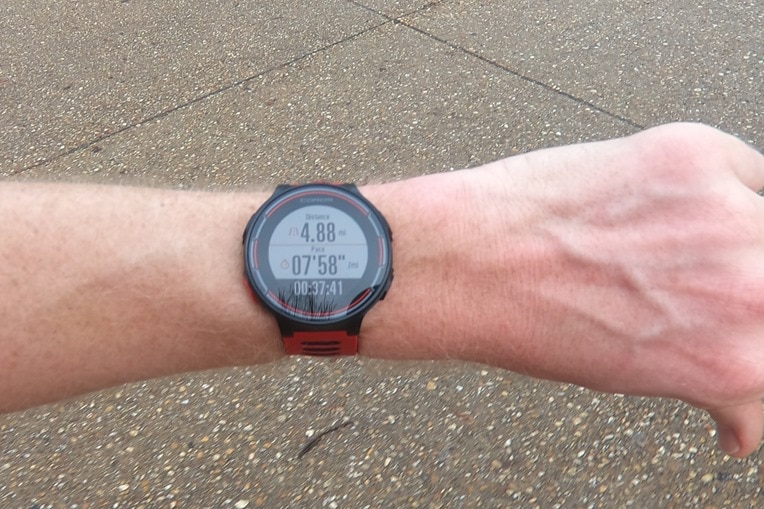
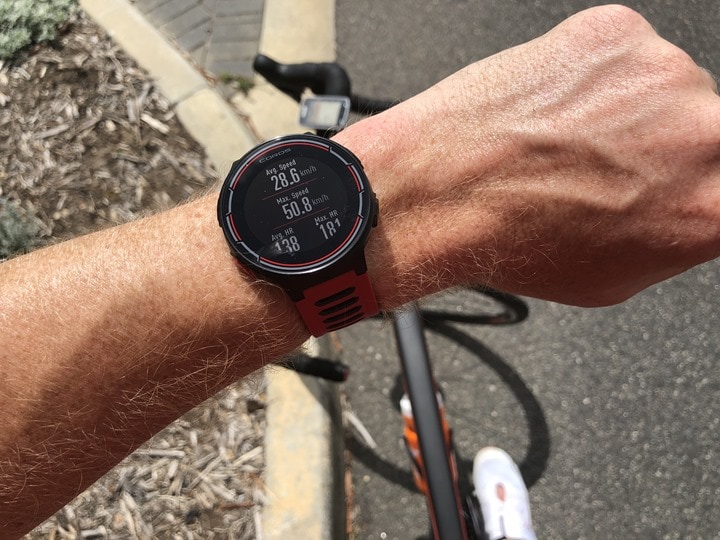

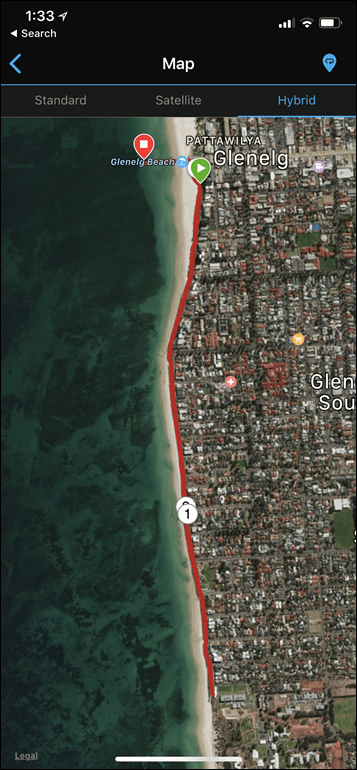
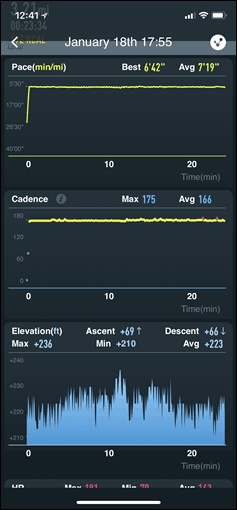
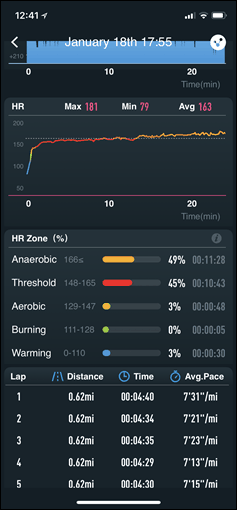

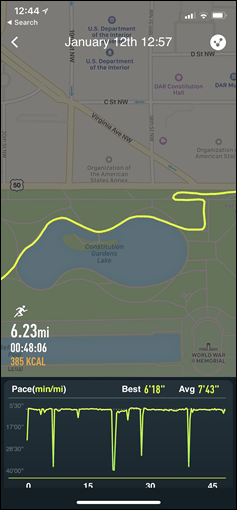
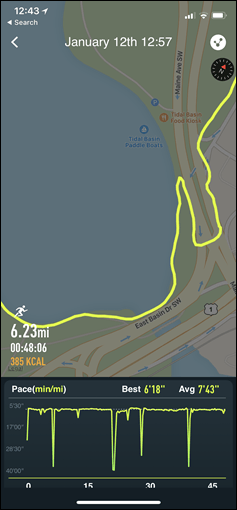
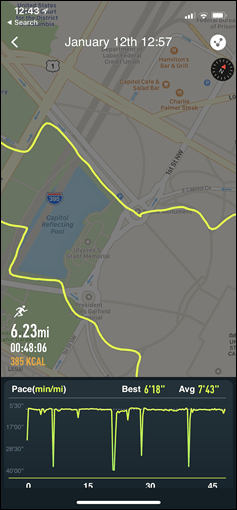

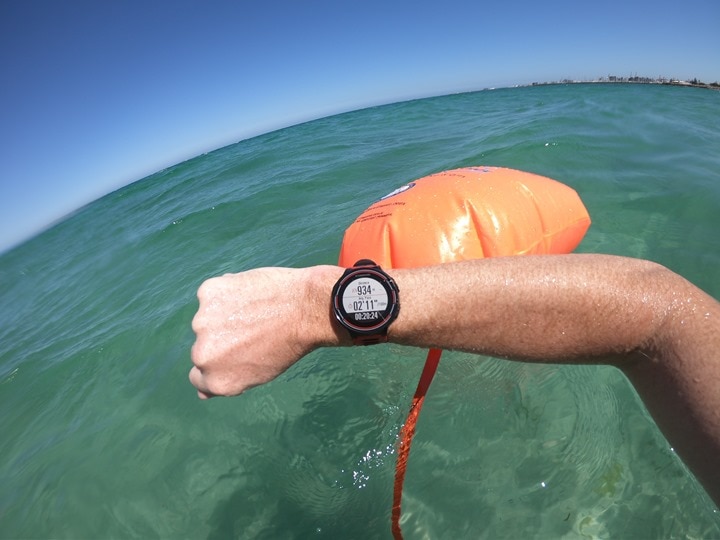
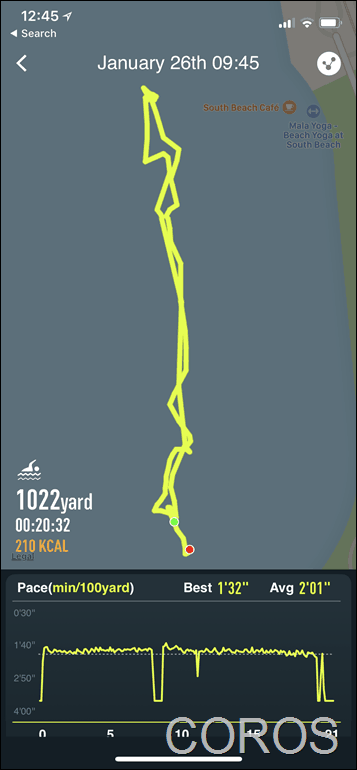
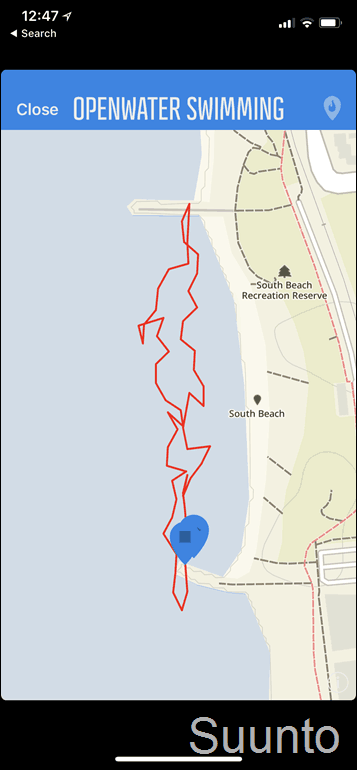
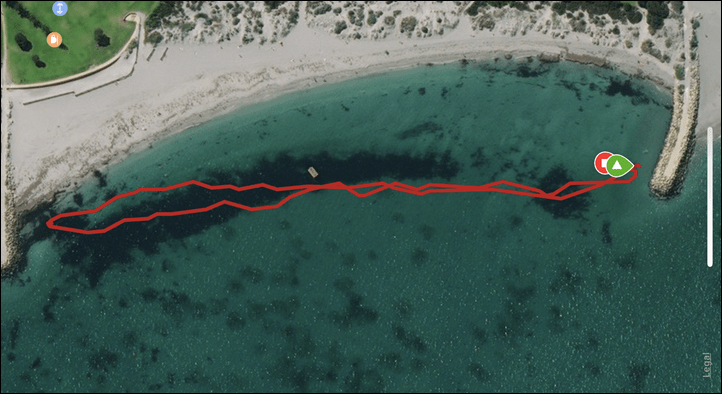
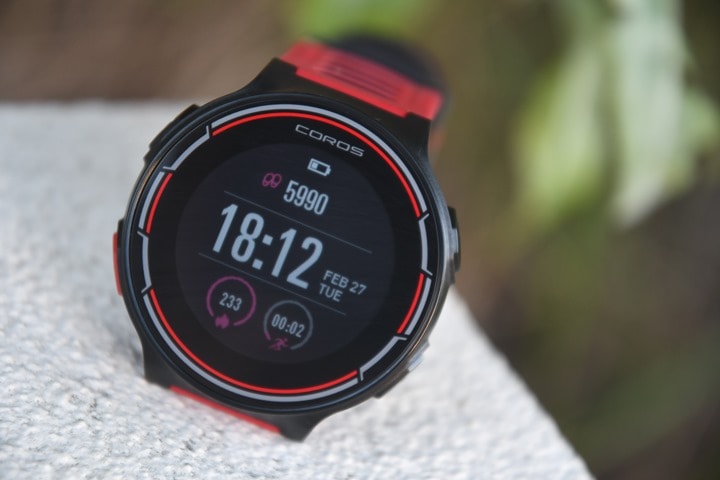
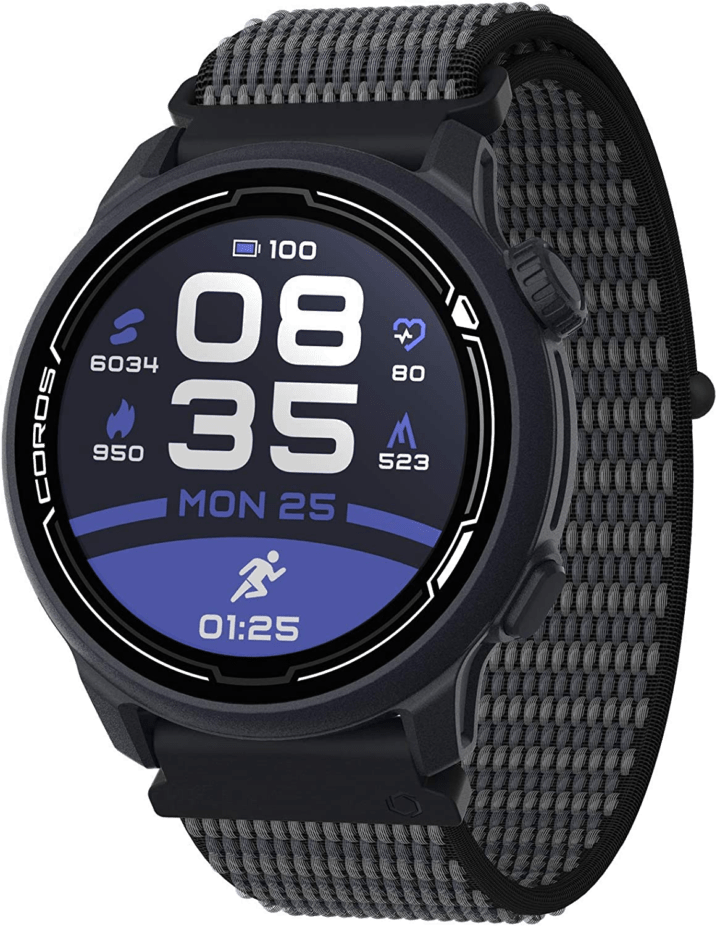
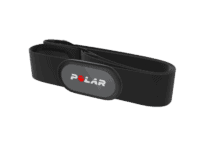
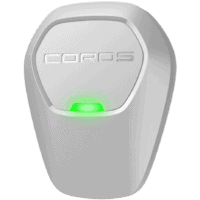
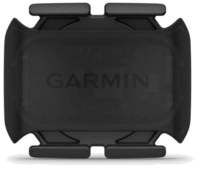

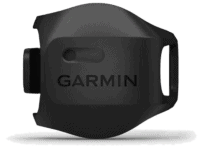






















… there’s a few features that aren’t on the watch today that the company says are coming?, along with some timelines.
Open access to data is extremely important, especially for a new player on the market. As you are a non-established player, your customers need to either be ridiculously trusting in your success and the continuous availability of your platform, or know that there is a workaround if you decide this is the first and last wearable you’ll ever make.
I’m personally very curious about COROS and the new offerings from Amazfit. Actual allround watches at a sub-premium price point, and all are candidates to get me off the Garmin platform.
Seems I’ll have to wait until at least April to make any kind of decision, but you can definitely see that as a good thing as it means these contenders have caught my eye.
And Ray, I really like the fact you’re picking up on these new players and including them in your thorough testing! Tbh, I would feel really insecure about buying something without a DCR review to back my choice up :)
If you can change the recorded run activity type to ride then maybe the Strava export would work?
Yes, that might work, but no guarantee that all metrics will be preserved and it’s still not half as good as actual access to the original files. Strava will add its own sauce to the data.
Yeah, was hoping same thing. Unfortunately you can’t change the activity type in the app itself in any manner.
So certainly you could run with it in cycling mode and change the type in Strava, but the challenge there is you wouldn’t get things like running cadence metrics afterwards. Nor while running would you get ‘pace’, just ‘speed’.
They’ve got it on the short-list to fix. It sounds like just a minor filtering bug on their site (I had Strava check their site and the app never sends them a file at all).
“I politely explained to them that if they didn’t allow access to files, I’d in turn strongly recommend not buying it” – Ray, can you explain (successfully) the same to Polar? ;)
…working on it.
To be clear, my specific concern here was there was NO method of downloading any workout files. Meaning, unlike Polar where you can download the .TCX file from the web portal, there wasn’t (or isn’t as of today anyway) any method to do that.
Step 1 is getting to the same level as Suunto/Polar/Hammerhead/etc: Being able to download and/or e-mail a file
Step 2 is getting to the same level as Garmin/Wahoo/others of being able to download a file as well as simply plug in via USB
second solution should be mandatory, especially in case of newcomers like Coross, because they might disappear from the market or stop support of the device and users would be left with still working device which can’t sync a workout anywhere (like Polar closure of polarpersonaltrainer.com)
For the v800 you can use this to extract TCX files directly from the watch:
link to github.com
does it work also with M400?
Yes, the V800 Downloader works also with the M400.
Here’s the link to the installers:
link to github.com
“This was is made by the same company as”
I think “was” -> “watch”
Thanks.
So you brought up the elephant. Given all the similarities (and parts that are identical) is Garmin likely to try to stop sales or take other measures for patent/copyright infringement? Granted, some of the phone manufacturers seem to take infringement too far (e.g. Apple’s “Rectangle with rounded corners”) but looking at some of your screen shots, they are lifted straight out of Garmin products. On a second note, thanks for reminding me of the early May time-frame for Garmin’s sales. Right now I’m eyeballing the 645 (non-M), but I can wait for May to see what the sales are first in case the 935 gets marked down any.
I could see both Apple and Garmin having claims here, but whether or not its worth it is the question. Garmin has done so in the past, with Bryton (Garmin won…or effectively won), but it’s been a while and I don’t remember the specific claims of that case.
In general, I’m not a fan of legal stuffs. I’m also not a fan of blatant copying. Rather, I fall into the camp of each company should compete on their merits. At present, Garmin already offers a better value product with the FR920XT (albeit slightly older and sans-optical HR). But as implied in my last section, they could easily drop the price of the FR735XT from $349 to $299, and that would pretty kill Pace as priced today. That’s cheaper than a court battle, and doesn’t make Garmin look like a legal bully.
Add my vote to the compete on merits column, but this sure looks like the kind of thing that large co legal teams live for.
It’s a shame the FR735XT doesn’t have a barometer. A very good watch regardless, but could have been great with it. It’s frustrating that you need to spend $400+ to get one on a triathlon watch.
It is a shame anyone would look like a legal bully for something so obviously copied. I’m happy I’m wealthy enough to purchase the original in a situation like this.
„In short, I politely explained to them that if they didn’t allow access to files, I’d in turn strongly recommend not buying it (since I firmly believe you should always be able to access your own workout files in an open/standard fitness format). Good news: They changed their mind.“
???
Hopefully they continue with it. #mydataismydata #openaccesstomydata
Sure as the sun coming up tomorrow — the Chinese gon’ reverse engineer.
Yup, true. The key is having what is essentially a semi-American fronted company to be their distribution point…which is exactly what COROS is (based near an Ikea in the suburbs of Washington DC).
Other elephant in the room here; The Wahoo ELEMNT Rival GPS watch which is on the FCC website link to fccid.io
Ray maybe already has one and cannot comment due to NDA but I am waiting for it.
It is another OEM’ed round watch with optical HRM just like the Coros. It might even use the same hardware?
Let’s assume the price is kept highish for the Coros as new entrants often seem to think they can get away with.
As Ray says, it goes back to the tri-newbie market. I suspect the ones that end up buying The Pace will be influenced by an instore salesperson or the results of an Amazon/Wiggle search – that kind of thing. They may well have never heard of this site or even Suunto for that matter.
I can’t see there being many people who buy it at £/$/Eu300. TBH I don’t even see the need for Garmin to react to its introduction.
It’s a bit sad that the only route to success is from price competition. There must be another way that another company entering the market could offer?
Penny/2Cents for your thoughts.
That’s the one I am waiting to see, Wahoo!
I think a company can always offer something unique/interesting from a feature standpoint and maintain/command a higher price point. I’m trying to think of some specific cycling/running examples, but blanking at the moment.
The challenge is COROS doesn’t really do anything super unique here. If they had music on it, sure, that’d be a viable reason for that price point. Or if they had licensed a bunch of FirstBeat stuff (the majority of components, beyond what the FR920XT has, to match the FR935 features) they could probably go as high as $249 with it.
I suppose in some ways, one odd example is actually Garmin competing with itself. Specifically the high prices for the various fancy variants of the Fenix 3 (and then 3HR and 5 and Chronos). Even more specifically, the introduction of fancier materials that dramatically increased the price not by adding features, but by being unique. Those have done surprisingly well, and in fact they were competing with their own lower end units without those features. Kinda an odd example, but mostly works.
Still…from a startup perspective…that’s tough. Probably because so few startups can compete on features to begin with. It’s the same death by a thousand cuts that Karoo has to face. Far too many people underestimate just how big an advantage Garmin has when they have 10+ years developing bike computers, or GPS watches. That’s 10+ years of running into all sorts of stupid edge case bugs, or millions of voices of feedback. We may not always agree with how they process that data into products, but there’s value in that that from their earnings statements clearly seems to be working. That’s the part that’s so difficult for startups to overcome (well, that and owning their own factories…people overlook the massive advantage that is).
I’m very excited to see what Wahoo can do. I really like their other products.
Me too. Funny how Ray and 5K Runner both avoid the word Wahoo…
Certainly, the FCC specs show what they show. But I’d caution a few things:
A) Wahoo both has and doesn’t have experience in this portion of the segment. Remember the Magellan Echo GPS watch*? That’s actually a Wahoo device under the covers. I can’t remember, but someone else used the Wahoo platform as well too for a watch (Timex I think?). They learned a lot from that, and if nothing else learned how darn hard it is to make a running watch.
B) When Wahoo announced and shipped the ELEMNT, it wasn’t exactly a hit from the start. It really took a year until the BOLT started shipping that they figured things out. Some of that was hardware (making a device people thought looked pretty basically), but a lot of it was software behind the scenes.
C) If they try and push forward and go with something more than just a running watch, that means also dealing with swimming – both indoors and outdoors. Again, more levels of complexity. Sure, they can re-port all of the cycling pieces from BOLT, but they have no existing swim-focused products in the market.
D) Wahoo has a long history of pushing back products until they’re ready. With the exception of trainers, many of Wahoo’s products have been pushed back between 6 months and 1 year from the initial planned release/announcement day. While in one sense it can be a letdown to see dates slip, I think we’ve seen them deliver largely solid products from day 1 versus having to iterate.
E) In general, when things slip out from FCC it’s because either the company or their certification partner chucked a day way out in the future for the confidentiality notices…and then totally forgot about it when delays hit. So it randomly pops up like finding dog crap while walking across your front yard barefoot one morning to get the paper. Almost every company in the sport tech field has been bitten by this: Garmin, Polar, Wahoo on other products, etc… Heck, I think the Wahoo MINI was revealed by FCC like 8+ months before it announced.
Just my two cents…
*Wahoo Watch V1 (aka the Magellan Echo): link to dcrainmaker.com
Noticed AGPS on the list of specs. Is the watch connected to cellular or do you need your phone with you for the watch to access AGPS?
Watch AGPS usually involves downloading a ‘helper’ file covering the next 5-7 days each time you sync. AGPS doesn’t need realtime access (we’re not talking WAAS here).
Any word on adding heart rate variability in the future?
Haven’t seen anything yet, but perhaps it’s just not something they’ve put on paper in an e-mail to me.
Looks promising, particularly the GPS accuracy, but I have many questions!
1. Any support for displaying and following a route/course?
2. Threshold alerts with audio?
3. Stryd/running power meter support?
4. Any FirstBeat metrics/proxies?
5. Custom interval workouts?
Also, can’t you just download gpx and tcx files from Strava?
1) Nothing on the roadmaps that I know of at present, but it seems like they’re pretty open to roadmap twists
2) It does have HR alerts today, but I haven’t tried them yet.
3) None at present.
4) Not FirstBeat branded (or if it is powered by then, it’s not listed anywhere yet). But they are doing VO2Max.
5) Coming in March.
6) Only for cycling (it’s not uploading other workout types), but at present it’s not including HR, so that makes it kinda useless for what I want. Sounds like that should be fixed kinda shortly.
It’ll be interesting to see Shane Miller’s breakdown of devices used in the next year or so. Garmin really does have a stranglehold on the watch market. Just not sure if these companies are innovating enough to take much market share. Other than say music capabilities, Garmin was a little late to that ballgame.
It’ll be tougher to see that going forward, as Strava has further locked down some of their API pieces (ironically, a week prior to the whole military thing). The lock-down had been planned for some time.
From a running only perspective, It’s honestly nice to see other companies getting into this and I hope they do well.
I am probably in the vast minority here, but the Garmin units I have had were crap as far as accuracy…and honestly, their customer service wasn’t much better. It’s why I like it when companies like COROS or Epson come out with a watch.
The problem for all of these “smaller” companies is that Garmin has both the marketing power and the market domination that it’s hard to make even a decent size dent. Suunto has managed to do okay, but I’d be willing to bet the market is about 90% Garmin, 5% Suunto and 5% others, as far as dedicated runners who wear GPS watches (I’m leaving out the Apple watch people because most of those are either weekend warrior or fitness types who do about 5 miles a week).
From the number Lama has put together, the running/tri market is more like 98% Garmin, 2% everyone else.
An example from the tri realm (but see the various linked data for running): link to dcrainmaker.com
The one exception being Ultra running, where it currently skews heavily Suunto.
Apple Watch is tougher to account for since they don’t tag anything properly on uploads to platforms. Thus, you have to play a bit of a guessing game. But certainly they are rising in the pure-running realm.
I agree with Jon, I also like to see smaller companies getting into this especially targeting runners. I was also excited when Epson entered the market but the accuracy of their own GPS sensor did not work for me (I’ve only used the 307).
Who knows, maybe a startup will integrate that uber-powerful GPS chipset that Broadcom introduced (BCM47755) which supposedly also combines sensor fusion for better accuracy.
But then again, it’s not only the accuracy that the current running watches are lacking. I would go as far as to say that there is no single GPS watch out there that understands/targets the dedicated, 60+ mpw runner. As simple as that. The opportunity is still there.
Yeah, it’s tough. Even Epson is taking a beating in sales (and that’s being polite). Of course, that’s mostly because they’ve come to the table with an app/platform that’s horrendously bad and a watch that’s ugly by 2010+ standards. Sexy sells, especially on watches.
Out of curiosity – what features are you looking for on a 60+ mpw runner watch?
A runner basically has three modes in order of importance: racing, workouts and just running.
Just running doesn’t really matter, a lot of people run time-based (Jerry miles or whatnot) and either way it’s either easy or recovery (even easier), so you might as well not even wear a watch. For workouts on the other hand, currently programming one is still too cumbersome and most of my runner friends don’t use it because they think it’s too much like programming. Consider that a coach might send you a workout in the form “2mi @LT, 1mi @10k, 6x :10 hill sprints”. In order to program that, you need to do quite a bit on GC (which I do every time since I am a programmer) but it becomes tedious. Yes maybe you have a fancy coach who is on TP and programs your workouts for you that you pull to your 935 automagically but that’s not most people’s reality. At this point it is straightforward to add an NLP parser that automatically programs the workout for you based on the coaches description. On the same note, it’s a miss that Garmin has not integrated pace tables or even better yet detected them from your past race performance. What is my 10k-equivalent pace given my last Half Marathon? Should I be constantly looking it up at McMillan or Jack Daniels? Yes I do have McRun on my phone but again, this becomes tedious and should be part of the workouts.
Then there are time-based workouts and distance based workouts and sometimes they are both. There is currently no way to program a time-distance mixed workout or have a “profile” or to help you. For example there are surge-like workouts where you run let’s say 6mi @MP with the first minute every mile @10k to simulate a surge. There is currently no way to tell Garmin run 10k for 1 minute then followed by 1 mile minus 1 minute. But you see, even if there was support, no one would do it because this is programming/math. What this also implies is that it is the workout, and especially mixed ones, that dictates the screen / profile that is selected not the other way around. Currently you first select a profile, then select a workout etc. Instead of having a ton of different “profiles” (like in 735 or 935) what you want to see during a workout depends on the workout itself.
It is weird that there is still no proper integration of footpods (that work with ML at every pace) with the watch from the get go. Yes there is Stryd or whatnot but it’s an afterthought. In 3 of the majors (CHI, Tokyo, and to some extend NYC) let alone other local races you can’t rely on GPS, at all. Instead of the foot pod being an afterthought, it should be an integral part of the experience that guarantees accuracy regardless of the GPS signal.
Running on track. That other place where runners live and do workouts. Name one feature that is targeting the track. Just to throw some ideas, some coaches place beeping clocks in the center that give runners an audible signal on when they should be passing the 100m or 200m or 400m marks. Currently there is nothing that facilitates working out on track to help you nail those 400 repeats down to the second (there are plenty of ideas here but I am sure you can imagine some). You cannot even mix and match paces (unless you go CIQ). On track you will be measuring meters but you might want your pace in min/mi.
Race mode. The third mode that runners have is racing. It’s amazing to me that the best new thing for racing is some CIQ apps that allow to “reset” the counter as you cross the mile markers in order to give you a better race time / average pace estimate (you covered one of them in the past). All this should be baked in the watch and again the reality is that competitive runners only care about time at the end of the day. Most runner’s marathons come out long by 1-2% roughly. Yes, it’s probably because of not running perfect tangents plus/minus GPS inaccuracies, but again the reality is the runner needs this info during the race. You could have a setting where you can bias your whole watch with that -1% or -2% that affects everything, including the instant pace. This way you know your current pace WRT to your race target at all times, not only when you reset at each mile etc.
Then there are the simple things like the fact that ConnectIQ adds together steps-derived mileage with running mileage. So if you want to have watchface that gives you the outline of your running week or compare cumulatives, there is no way to do that (at least that was the case a few months ago when I last checked the API). This shows that Garmin conflates the everyday, I-wanna-be-active user with the 60+ mpw user.
Anyway the list can continue forever. My main point is that a running watch feature list should empathize with the high-mileage runner who lives between a ton of easy runs, complicated workouts on track or the road and puts everything on the line every race.
I applaud you Sir. One of the best comments I’ve ever seen posted. Some great ideas there.
(fellow 60mpw runner – some weeks anyway!)
A couple of comments re the fact that “serious” runners (without putting any label in terms of mpw) are not catered for by watches.
Footpods – agree they should be integrated more and also overwrite (at least some of) the stats of a workout so not to relay on GPS when it doesnt work that well (track and in general short circuits). If you want reliable stats the only alternative is to disconnect GPS but that opens different issues.
Baro – this should be a defult in any middle/high range watch targeted at runners. I would pay a bit more for it if you gave me a running watch with that sans all the gymmicks for multisports (so i guess 645 is going that way, which is good). It beggars belief that one has to rely otherwise on altimetry adjustments from the various Strava, Training Peaks, G Connect etc that themselves at times they do a crap job.
Structured workouts – i think Garmin doesnt do that well, Suunto does on paper but the way it works on the watch is comical. But come on if you run a ton a week you should know by know where your HM effort is compared to your 10k one etc. You can also rely to some extent to your HR for that….
Track – see comments re footpod above. But given the inability of GPS to work on track to rely on a GPS for that is a lost cause. And why exactly would you need a watch to tell you you have run 200m or 400m…. on track…. seriously?
General inferred fitness – that is a laugh, whoever tries to estimate that. I have one guy who has been scoring consistently 68-69 VO2 MAX on his Garmin, and he is about 2′ slower to where he should be on a 10k. On the other hand a 5k guy cant just break 60 for his life on his watch and he is a sub 16′ guy.
AT – that’s another area where the makers dont have a clue. My middle distance guys do tempo intervals a lot (say no more than 10-12′) and that is not enough to give them an estimate of where they are in terms of AT (not that they care).
Buttons – if you use a watch on track a lot you need to be able to snap laps properly while at speed. So two buttons is a must on the active side (right Suunto?) and they need to be able to be easily reachable when you cross the line (right Polar?). It is common sense, at least it should be….
So yes overall a lot to be desired from what is out there…
thanks @gingerneil, there is many more ideas like that which i hope one day finally make it into a “runner’s” watch …
@BC I agree it is better not to assign labels in terms of mpw or calling someone a “serious” runner. I guess there are some runners that run pretty much every day but more importantly they are consistently training. Meaning regardless of the mpw, they usually have 3 workouts a week (on/off track + long) which dictate the rest of the schedule.
In general I agree with all your comments and here are some further ideas. About the Barometer. Yes a lot of misses there too. If you have been around enough, you have seen those elaborate Excel spreadsheets that exist for all the Major marathons, that classify each mile by ascent/descent etc. to help you with your race strategy. The spreadsheet calculates essentially a GAP (grade adjusted pace) that helps you overall with your race/pacing strategy and even ads penalty for slow start or fading-finish. Again the incorporation of a Baro and even better an underlying Topo map could give instantaneous GAP that would be so helpful in racing but would also help with the overall pacing strategy.
I also agree that in theory one would know where her HM effort is compared to her 10k but the reality is that fitness changes. Sometimes for the better and sometimes for the worse. I would expect my runner’s watch to help me naildown those equivalent paces the same way my coach helps me to do that.
WRT the track. I don’t expect the watch to tell me I have run 200m or 400m etc., that’s indeed silly. But I do expect it to help me nail the exact time I need to run my laps. As you probably know, track workouts are given in seconds (like 10x 71sec 400m). I would expect my watch to tell me if I am ahead or behind as I pass let’s say the 100 marks. For example, it could vibrate every 17.75sec which is when I *should* be passing the 100m marks in order to hit my 71 sec target. If I “feel” the buzz earlier than the mark, I know I am going slow etc. It’s all about nailing seconds on track. For crying out loud Puma made a stupid robot that goes around the track on a programmed pace that track runners are supposed to follow :)
Moreover for track workouts, there is no support in converting let’s say a 71s/400m pace to min/miles. That should be also a given. Again, there is many more ideas that pertain to track workouts but no company empathizes with what happens on track.
General inferred fitness. I agree. The whole array of Firstbeat metrics is a joke. At the very least its implementation. I understand that in theory the watch just calculates a number (let’s say VO2max of 62) but if you wanna know more, you need to enable RR recording on the watch and then pay Firstbeat for further analysis of your data. But the reality is that this data shouldn’t be immutable. The watch should be recording everything (like WHOOP does) and then allow the runner to run their own VO2max analytics after the fact. Who cares about VO2max analysis on the watch itself, it’s a post-workout kinda thing and should be correlated with TRIMP etc.
Buttons – yup, no-one likes to cross their arms to take laps at high speed. So they could either provide a ring-controller you wear on the other hand (similar to what Sony provides for their Walkman running line) that you use your thumb to take laps without crossing your arms, or even provide some sort of personal RFID lap tracking thingy that you place on the ground on the track (at the start) and keeps your own laps as you cross the mark.
Even the battery display is not helpful. Why do I care if the battery is at 63%? All I care about is if I have 2h of battery left so that I can go out for my run. Most of runs are between 60 and 90 minutes and longs between 120 and 150 minutes. All I care is, can I go out without my battery dying on me? This is the info that should be surfaced, not percentages.
Anyway, the point again is that someone with UX background who hopefully is also a runner would spend some time to take everything back on the basics of competitive running and give us a product we would love.
Who knew my comment on a running watch that is non Garmin would spark such great conversation about what people doing “higher” mileage want!!
Ray, your answer to my original statement is another example of why I love this site so much. You *actually* give good, real feedback on your readers comments. Loved your Outside Magazine feature, btw. Read it while waiting at the Dentists office in the waiting room. Ha!
@Jon let’s hope Ray reads and comments on it since he asked for specific features :)
And one more! I don’t want my watch to beep at me that I have a new work email while I’m relying on the beeps during an interval workout! I don’t want to have to squint at the screen mid-tempo run when I think I’m meant to be changing paces, only to find that admin are sending out next week’s seminar announcement. Can we turn off notifications during a workout please? Or at least select which ones are important enough to let through.
My Suunto (definitely more common that 2% among trail and ultra runners) basically offers notifications as a mirror of what’s on the phone only. Which is fine day to day, but not during a run.
Wow, lots of really cool suggestions in here!
In particular, I think from a competitive running standpoint the ones I like the most (which I’ve seen in various variants over the years):
A) Some method to align track distances to the watch: I’m 100% in the camp of just doing mental math on the track for myself and pacing. However, that doesn’t fix the post-workout data for coaches/etc. I’d love to see Garmin leverage re-usable solutions here. For example, they could easily support triggering lap splits based on Tempe-like devices placed at the 0m or various corners. That’d likely get you within a few meters. Of course, the trick is not forgetting the coin-sized thing at the track, but you could just stick it in your bag at the edge of the track and problem solved. Or attach it to a large orange coin for a track coach.
B) Race marker alignment: There’s a CIQ app that I featured a few years back that does this – resorting your lap markers to the actual race markers (link to dcrainmaker.com) – I don’t know why this isn’t in the product natively. It should be.
C) Baro – I think we’re seeing basically any device over $200 have this these days. This isn’t because Garmin or others care about runners altitude, but rather because they’re competing with Fitbit for the ‘stairs climbed’ metric, which requires it. But, that’s good news for runners. I don’t believe we’ve seen any Garmin watch released in the last ~2 years above $200 without it (except the FR735XT, which was just under 2 years ago).
D) FirstBeat: I think this is definitely a good direction, though I honestly think most coaches are afraid of it because it doesn’t match what they have. Some of that may be true, but at the same time I also think too many people write it off too quickly versus giving it the 2-4 weeks it needs to adapt/learn you. I generally find that when you have a company (FirstBeat) whose entire existence is based on dealing with high performance athletes, and have boatloads of smart people doing that…that they’re probably worth listening to. At the same time, there are elements of data that needs to be more open here (i.e. pushing it to Garmin Connect fully, and onto training platforms like Training Peaks). In the case of Whoop, they don’t make any of your data available – it’s as black box as you can get. Not a fan of that approach.
E) Better structured workouts: I think what Xert is doing for cycling via Connect IQ is a fantastic example of how Garmin could leverage smarter workout structures. I’d guess they would be a prime licensing or buy-out opportunity, especially as they gain steam. At the same time, I question how much value that’d provide to coaches or athletes already coached by high performance coaches (since they’ll do their own thing.
In general:
I’m less enthusiastic on trying to conform specific training methodologies into the watch. After all, almost no coaches agree here to the level even this thread discusses on specific training methodologies, and realistically I find most coaches tend to get incredibly complex on this stuff that just doesn’t translate well in tech without a lot of work.
Still, more can be done with the workout builder. Garmin’s workout builder is the best out there (for all sport types) from a manufacturer. The only one better is the one used by Stages/Today’s Plan on the Stages Dash. Super cool. Still, I think the better approach here is offloading that to these 3rd party platforms like Training Peaks and such, but ensuring that the connectivity to Garmin is better. Right now it’s via Connect IQ app. But there’s no reason it can’t be more native, like what Wahoo does for connectivity. This would make it cleaner for coaches and athletes.
support ideas!!!
I run ultras so battery life is something I’m seriously looking at. Running 100mi, being on the trail for 24-30 hours is a real possibility. I could be wrong, but the research I did found I needed to spend more money for this kind of battery life or I need a separate chest HR monitor as is the case with the Sunntos.
GPS accuracy and elevation come in a close second. Everything else is icing.
Good Lord Garmin, hire this man! Even as a casual triathlete, ease of inputting workouts (let’s say, from runcoach or others), it’s so hard to input in to Garminconnect that I just don’t do it.
This is more than ease of use. This is making the platform work seamlessly.
Question: Any plans to pair with their helmet, e.g. to do voice announcements when you trip over an HR or power alarm? For an extra $10 or so, it seems they could have also put audio storage into the watch. That’d let them sustain a higher price. And, yeah, way off in a niche: if the watch paired with the Garmin Varia Radar as well as their helmet, they could do something as simple as mute/lower the audio if a car was seen by the radar. (This is a niche I happen to inhabit, so I’m guilty of self interest here.)
Nit: Did they really have a spelling error on the watch itself? “Total Decent” instead of “Descent”?! (See your first video, 7:20 second mark.)
Bottom line: I totally agree with your assessment of the price/performance. I also think they could hire a graphic artist (in addition to a tech writer) to get a little cosmetic differentiation from Garmin. Perhaps they’ll do it before the final release. But I’m a “happy panda” because of these new entrants to the running watch category, especially Wahoo.
I haven’t heard of any tie-ins with the helmet, though certainly that’d make a heck of a lot of sense.
Spelling errors wouldn’t surprise me. The developers aren’t native English speakers, and I’m guessing they haven’t had teams review everything at this stages in development yet.
Hey, what about the HR monitor while swimming? Will it record HR while in swim mode?
I know HR during swimming isn’t supposed to be accurate, but I’ve been using my Mio while swimming – display only, no recording, with my Garmin 935. It works fine for my needs – not perfect, but would like to only have one device on my arm.
Speaking of Garmin and watches – any word about Fenix 5 and when we’ll see any major update? I’m in the market, but I’m waiting on the sidelines. The Coros looks decent, however, but I’m a patient buyer and willing to wait until summer (or Fall) to see what appears.
„So what is the right price here? I think $229 is appropriate for this year for Pace. At least until they build out more advanced features. I think they should basically just ‘own it’ from a pricing standpoint in terms of being a lesser known but potentially very capable triathlon watch. Sorta like what Polar did years ago with the M400 GPS watch at $160 (when Garmi“
I would even go further… and say $199.-
Yeah, I flirted back and forth between $229 and $199, but I think $229 is fair in that it has an optical HR sensor. Whereas $199 would seem like a good sale-price.
Ray, I’m rocking a beta unit myself and so far it’s been pretty decent. They have been slowly adding more and more features and they seem to work. I run and bike with my Forerunner 230 and the Pace all the time and compare the data all the time. So far so good, the swimming will be further improved by adding Yards in a week or two.
Let’s see how the final product turns out.
Awesome one. I like the display very much. Any ideas on how much would be the battery life considering it is a LCD display?
Also, is it just for running/cycling/swimming and not for other gym/indoor based acivities (HIIT, weight lifting, cardio) by paring to an external HR sensor? I don’t care much on the Forerunner 645 as the display seems to be dim.
Any thoughts?
“I’d in turn strongly recommend not buying it (since I firmly believe you should always be able to access your own workout files in an open/standard fitness format). Good news: They changed their mind.” Thank you Ray!
This may come across a bit harsh but personally for the price its a non starter. Besides the Forerunner 910 und 735 options at this pricepoint its competing against the Garmin Fenix 3 HR, which unlike the FR735 does have barometer and probably a slew of other features. I mean the Fenix 3 does lack CIQ2 compared to the F5 but then theres no such thing on coros either. And with a garmin I also get the garmin ecosystem.. With stuff like running dynamics, vo2, the whole first beat technology integration etc etc and most problems pretty much ironed out, surely the fenix3 option is way more attractive than a coros blatant carbon copy Forerunner lookalike? Not trying to bad mouth the coros, but it is what it is, right?
Just as a quick update, I got a bit of clarity back from COROS on the feature titled ‘Dynamic Running’. It is as follows:
“Confirmed the “Dynamic Running”, the full name should be “Running Dynamic Analysis”, it’s an algorithm of gait analysis by PACE watch G-sensor. It will visualize the balances of your body during running, the time duration of touching ground for each of your feet. It’s a tool to give the runner a method for improving his/her running form. It will display in Running detail screen.”
I can definitely see Garmin having issue with this. That does not make them a bully at all because this is pretty much blatent. That’s the issue when you are the big dog on the block, everybody wants to do what you do.
” All of which ignores the reality that Garmin (and others) often/historically put on sale triathlon-focused units in early May”
Any chance the 935 will go on sale in May, or should I not wait?
That’s a tough one. Certainly we saw the Fenix 5 on sale back this past fall – so that’s likely fair game.
We haven’t seen a US sale on the FR935 though, but it did go on sale in Europe last month. As such, I think there’s probably a chance we’ll see it on sale. But I have no inside information on that.
I’m taking the gamble and am waiting until May. (at this point I probably wouldn’t want to switch watches until I finish the half I’m training up to anyway) I’m still waiting for your review, but I’m liking how the 645 looks on paper (assuming you don’t uncover any major problems when your review comes out). However, since I don’t care about music (deaf), and I’ve never even used Android Pay on my phone, if the 935 were to come down somewhat close to 645 territory, I’d love its extra battery life and a few other odds and ends. The only other factor that would lean to the 645 is if there were a better chance of it upgrading to the next version of CIQ than the 935 has.
Any news on when we’ll see it on sale?
Pascal
I haven’t heard anything recently, though, I did get see a pretty substantial app update not too long ago. So that might mean things are getting closer.
In response to my email inquiry this morning, a Coros representative said the launch date has been moved back to June 1st.
Let’s hope that this delay is to include new features!
On sale now!
but at 299$ !!
I was interested in this watch but not at this price…
Yeah, $299 is tough. Primarily given the Suunto options at non-sale prices for less than that.
Also, the number of features outstanding (to be implemented) also makes this a really tough pitch. Here’s the most current upcoming features list and timeframes as of yesterday:
Available end of June/early July:
• ANT+ and BLE Accessories Connections
• GPS Eco Mode – This will extend the battery life in GPS from up to 25 hours, to up to 40 hours.
• Interval Training
• Power Meter Compatibility
• VO2 Max
• Floors Climbed
• Manually Set Time and Alarm Setting
• MapMyRide, TrainingPeaks, MapMyRun Support
Other features being worked on for the next firmware release:
• Exercise Time rework – the time spent with each activity will be counted towards the Exercise Time on the home screen next to the calories counter.
• Improved stride algorithm
• GPS fast-locate
• Manually set time
• UI and function design improvements
• IOS/Android
• Multi-language support
• Additional data for “Today” page
• Improved Bluetooth Connectivity flow
• Improved filter option for data under the “All Workouts” page
• Support for .fit file format
I’m honestly baffled they launched without all this functionality. This isn’t a new space and the established players have a pretty darn good feature set at this price range and you need to REALLY stand out to take them on (Epson learned this the hard way.. multiple times).
Hi ray you say you get final model again.when we will hear finnal review about launched version?
It’s something I’m working on over the next few weeks.
At present I’m honestly trying to decide on how to approach things. As I’ve said all along, if they launch without the ability to export data to a format of your choice (as they’ve done by only uploading to Strava), it’s a deal-killer. Sure, they’ve promised to add export functionality soon – but…I usually don’t base reviews on promises.
Hi Ray, any schedule of finnal review for pace?still waiting for your finnal word before choosing between 735 and pace. I hear that on last upgrade they aded pdf export for workouts.
Hi Ray.
Has you taken a look at the newly released Amazfit Stratos watch, which is similar? Seems it has a open design program for watch-faces etc.. Great for developers & programmers. Coros is still my first pick. Cheers, Rol
I am in same situation, pace vs 735xt. Waiting for final review from Ray and it will be nice if Ray include the comparison with 735.
I think one of the biggest challenges for the Pace is the same problem I outlined in February – the price doesn’t reflect its actual market placement/position.
As you pointed out, you’re comparing it against the FR735XT, and as such, it simply doesn’t compete against that from a features/standpoint. Sorta the same problem competing against the Suunto Trainer Wrist HR at $275 (or when it’s on sale often for $220ish).
I do still want to dive into the Stratos more though.
Hi Ray,
From feature standpoint, 735 and pace looks similar (not sure on the software side though), the only reason I am comparing these two is that pace has more battery life (Coros claims).
But again, I would like to see the real world data comparison of HR/GPS and other features to see if it really stand against Garmin 735xt. Please let me know what your thoughts are.
And thanks for all the info that you provide, really appreciate it.
Hi Ray,
I understand that a main point of comparison in your reviews is the price-point but for some of us the price is not as important but having a reliable training watch is. I am considering an upstart like Coros (same way I wanted to like Epson but …) given how fed up I am with Garmin’s software QC (both FW and GC/GCM). I simply don’t trust Garmin anymore and I don’t see that changing anytime soon.
That’s also why I spent so much time collecting my thoughts on running-specific features on my lengthy posts above, with a hope that Coros (or even Polar for example) will pick some of them up and give us a running watch that Garmin simply never will.
So in that respect I am also interested in a “rolling” review regardless of Coros price-point since they seem to be adding new features with a good cadence.
I think you’re much more likely to get that quality from Polar than Coros, based on my testing with the Coros unit.
Part of the challenge I have in reviews is trying to convey the nuances of software quality levels. After all, it takes one person a single bug to assume that an entire companies products are flawed.
But what is much more difficult is how to approach lots of smaller blockers or things missing. Because one might not realize those things are missing…until they specifically go to look for them.
If we look at the FR735XT specifically from a reliability standpoint, I don’t really hear anyone having issues there (especially not these days). Certainly the altimeter is GPS based, so that’s a bit of a downer (versus barometric). But otherwise the unit is two-years stable.
Thank you for taking the time Ray, all very good points. I am patiently waiting for the V800 replacement which I thought would be out before this summer but … still waiting.
You are making a very good point about conveying nuances of software QC. But with Garmin it’s also about all the details here and there which although not “bugs” per se, they are still simply not well thought out. For example, plots on GCM and on the watch are so poorly implemented but not buggy per se.
And I see your point of single bugs making people assume entire companies or products are flawed. But for me at least, it is bug after bug and design decision after design decision that made me loose trust in Garmin and their Forerunners.
I could consider going back to the 735xt but I used to have one and it died by “infinite buzz” (hardware mulfunction) and the HRM-Run that came with it had to be replaced 4 times as they kept dying. Let alone all the bugs that I would love to believe are all ironed out 2 years in. But spending $350 for an “old” watch that has already died on me, is just too much to take.
So Ray will you be adding this Coros Pace to the Product Comparison table so that we can compare the functions against the FR 935 or 735xt?
Have you tried this watch on interval/tempo workouts? Having been foiled by a Garmin FR watch that takes 2-4 minutes to catch up to rapid pace changes (which makes it totally useless for speedwork) I don’t trust Garmin products anymore. Just wondering how the Coros responds to quick pace changes in intervals or tempo runs? It’s the only time I really use my watch extensively during a workout so I’d be willing to pay a little more not to have this pacing lag problem.
I bought one and it is worthless without realistic instructions. I called the tech guy at COROS – what a joke. He says “just mess with it and you’ll figure it out”. Everything I find on line say’s it works like a GARMIN i don’t have a GARMIN!. I paid a young guy to set it up so I can see cadence, Avg pace minutes/mile and current pace. $50 bucks gone – he couldn’t do it with the info available. Do you know of any current place for a novice to learn how to run the PACE? I bought it thru AMAZON and they don’t want to take it back. I don’t care about anything except the ability to view cadence, Avg pace minutes/mile and current pace while running.It seems this should be doable.Any advise?
The PACE doesn’t have any manuals, Coros told me that you should use the APEX manual for now, until they’re able to publish one for the PACE. I agree that this is a very poorly designed watch and I greatly regret buying it, but it’s fairly easy to set up the watch face the way you want it. There’s no online app or any way of seeing your data or changing the settings – you need the watch turned on and close enough to your phone that the Bluetooth connects, all settings for the watch are done through the mobile app.
Then, touch the watch icon at the bottom of the page and 3 options should be available – one of which is “Custom Interface”. If it’s not lit up, your watch isn’t connected to your phone. Click on “Run”, and all of the 5 possible pages (screens) will appear. Then, just click on each page, select the template you want for that page, and at the bottom of the screen will be all the possible metrics you can select. Since you only want a few metrics like pace and cadence, I’d advise using the first template with one large reading, because the Coros screen is REALLY difficult to read while you’re running if you allow more data on a single screen.
Just as an aside, you should get your $50 back, this is not super complicated – although I had to email support in order to learn how to turn off the watch, as the off button is buried three menus deep! Good luck :) I’m just trying to sell mine on so I can buy a watch that’s designed for runners.
Do you have a review coming on the APEX? I’m intrigued by this watch but want to know more about the different workout options and if the battery life is as good as they say it is. Thanks!
Does anyone know if you can use the stopwatch feature, without engaging the GPS signal, such as timing athletes on a track? Thanks for the feedback!
If you hold the upper left button for a couple of seconds you get the stopwatch and alarm features. You can just turn off the GPS but if you’re using the stopwatch feature from this first menu it’s not tracking anyway because you’re not tracking an activity, just using the stopwatch. I think that’s easier than turning off the GPS (which is done from inside the activity), mostly because it’s so hard to find the GPS function (and most of the other functions too, lol).
Are there any non-garmin watches (including this one) that support “mass storage” (UMS), where I can plug it in to any computer and drag (unencrypted/common-format) files off?
great question. you seem to want the same as me
some watches like Lezyne Micro Watch do it, IIRC
but newish suunto and polar will not and even the music enabled new garmin watches cannot be easily attached as a drive although dragging as you ask for should work from them
I believe that when you sync some devices via a PC to their cloud the syncing software will store an accessible copy on the PC. Garmin used to do this for sure with Express and I think that you can get Suunto files that way too (at least for now, possibly .JSON format). I specifically was looking for this solution to Polar recently but couldn’t find one.
someone will now mention tapiriik
but I need a vendor controlled solution (like Wahoo) where the vendor gives the option to put the workout file where I want it on dropbox. (If dc chips in I suspect he wants the same).
more of the bike computer companies seem to support the behaviour you (and I) want, so if any of them ever make a watch all will hopefully be good there.
Yeah, Leyne is about the only other one I know in the watch realm. Suunto, Polar, Apple, COROS, all require either an app on your desktop or phone to sync. The reason is actually a bit more interesting than you might at first thing: Some of them do post-processing of the data, both GPS & HR data. They often leverage various cloud services to do so.
On the bike computer side it tends to be a fair bit better. Almost everyone that I can think of allows mass storage access: Garmin, Stages, Wahoo, Sigma, and I think even Bryton off-hand. As TFK noted, some companies have sync options to things like Dropbox, though virtually all have it to major training platforms. I haven’t used Tapiriik in a while, as I found it a bit flaky for my main use cases. But I do use native Dropbox integration whenever possible. One of these days I or someone else will manage to convince Garmin to allow native Dropbox integration…
It is annoying that, because of a feature I’m never going to use (music), my Fenix 5+ no longer mounts on the desktop like all of my earlier Garmin watches do. I now know how to check storage on it (just check the Music panel in Garmin Express). But (I suppose it’s unlikely at this point) if Garmin runs a beta for the 5+, how am I going to get it on there? It was easy on my Edge 830 to try out the beta, and I’ve done it many times before with other Garmin devices. Can’t easily check storage, can’t remove activity files or manually get them into other software/sites if something goes wrong. I have to rely on Garmin Connect being available.
It’s different because of the music element, so they wanted it to show up as a proper music device.
That said, on a PC it doesn’t make much of a difference to me. I can still copy/paste into it just fine.
Thanks everyone for the responses! I’m mostly interested in data privacy… but may opt into one of the cloud services… not sure yet. Garmin isn’t working well where I am so I’m in a tight spot (new and old watch).
Was there ever a full review, or consensus on this watch? Seems like a good lower priced watch if you don’t want to go Garmin. But I haven’t found an extended review from my trusted source!!
Hey Brent,
I have been using a Coros Pace for the last month and I really like it. I run 4 to 6 times per week. Obviously I’m not review pro but here are some of my findings.
it’s light and comfortable to wear.
Battery life is excellent. I wear it all day and night. Trained in GPS mode for 8 hours since the last charge and I still have 38% battery left. Also charges really quick. (i’m hoping to track a 24 hr run in December)
GPS is accurate. Good enough for what I need it for (Trail runs, road running)
Optical Heart rate monitor seems a little on the high side at the beginning of a run but after 1 or 2 km’s it’s about the same as what I’m getting from my and+ strap on my old Ambit 2R.
App is really easy to use and to setting up your custom settings is super easy. Connects to phone without any problems.
What I thought was wierd is that I had to update my watch for every new release since it was made. This took a little but since then there’only been one other update.
Also there is not instruction manual. I found out on accident that when you hold the back button you can acces stuff like the compass, watch face settings, stopwatch etc.
So for a semi serious casual runner like myself this watch seems like a pretty good deal. Got it for € 199,- of Amazon.de.
Hope this helps any…
Hi Erik,
Thanks for your detailed reply!
I waited for a couple days regarding feedback, and just decided to go with it. I’m super stoked with it so far. Battery life is fantastic, like you stated. Figuring out all of the other features slowly, but easy to set up with my power meter, and I’ve been really pleased.
I had a Tomtom before – just easy to use and such, but wanted to try something else, and I’m more than willing to go with a Coros again (wife will be needing a watch here soon too!)
Thank you for taking the time for your really good reply. Much appreciated!
Brent
How does the triathlon mode work? Does it allow ‘one button’ advance among sports “swim to bike to run”, each a single button press to advance? Does it support transitions?
How do you access the preferences in the Coros App, on, for instance the iPhone?
It could easily be so much better!
After a few days of use: I contacted the coros support via email 2 times on some problems, but till now i got no response (8 days). This is NO support.
My watch seems to be of Spain origin, because some words in the menu are spain, even I set language to German and firmware is up to date. Funny, but i can live with that. Coros Pace is a watch without frippery, not like most of the other competitors, really great! What use is a Open Street Map in the mountains? What use is a contactless paying up the mountains? Forget that. The watch focuses on the essentials, the price of 199.- is far below the overloaded products of the competitors. And the Coros Pace is very light. A watch for people who do sports and nothing else with it, very reasonable.
The Pace has got an altitude meter, which you can calibrate manually, really important. The competitors manage this only automatically via GPS ( except Fenix and FR 945). Seems they have never been in the mountains in bad weather conditions or in deep forrest, where GPS is very weak.
The evaluation possibilities are state of the art. The connection with the mobile is super easy. But you need a mobile for many settings and evaluations. Unfortunately the app sends many (all?) data to Coros, there is no privacy, or i have to protect myself with a security app (e.g. netguard) for to avoid uploading of all my data. In any case the evaluations seem to be processed not in the watch or the app but on a Coros server, because in case I cut the app from internet, then essential fitness parameters dont get changed anymore, whatever I do. Very bad, without uploading my private data some important fitness evaluations are not functionable, and that without necessity, because these evaluations could easily be managed by the watch itself or the app at least.
Battery runtime is at least as long as advertised, thats great. With 10 hours sport a week the clock lasts at least 10 days.
As with all other watches you must use a chest strap in case you need a really exact heart frequency. Measurement at the wrist is significantly more sluggish.
Sleep analysis is faulty, the clock lets me still sleep e.g., even i am awake already. And it really looks like the watch uses a 10 min. heart rate interval for sleep analysis, even i had my pulse sensor set to “enhanced” (1 sec.). To try serious sleep analysis based on a 10 min heartrate interval would be ridiculous of course. There is a funny workaround: simply start a indoor exercise over night, then you get 1 sec. heartrate monitoring, you only get no “analysis” then. Fortunately one does not really need this gimmick for sports.
The VO2max calculated by Coros is simply wrong. My VO2max is regulary tested by spiroergometry at about 46. The Coros Pace calculates 24. Useless. How can i run up a mountain at about 800 altitude meters per hour with a fat 82 kg body with a VO2max of 24?
It would be great, if one could edit the list of possible types of sport , that only those are shown, which one personally needs and not always the really long complete list.
Actually a very good and priceworthy watch for sportsmen, with essential potential for software improvements and privacy. If only there were not the issue with the display. Ok, if its really bright, you can see all very well, the brighter the better. Even colours appear then. But woe if light is not perfectly bright, e.g. early morning when leaving a hut for a tour or at the gym in the dimmer spinning room with video projection. There you can hardly see any, even I set background colour to “white” and font to “big”. The “white” then is not white, not even gray, its a dark-dark gray or anthracit, the contrast tends toward zero (foto). Even my really old Polar RS800CX has got a better display in darker environments. One can switch on background light for a few seconds, thats enough for fetching the time, but for a continuous control of the parameters its insufficient. During a workout one cannot switch on background light without changing the display settings, so one has to push more buttons always for the background light, simply impossible during hard workouts. A separate button for light is missing. Its clear now, why the battery lasts a whole week absolutely easily, if the watch reduces the energy for the display to nearly zero. This critic may be eventually valid for all other competitors with transflective display, I made no test comparison. As a workaround for morning indoor biking I once used a headlamp, then everything is easy to read, funny or? Therefore Coros people: Please spend some of the watch energy for the display (if only the user could choose display brighness over battery runtime, 5 steps till really bright) or give the watch a 1000nits amoled display, then I would be 5-stars-happy. But right now: 2 stars minus for the bad display and 1 star for the unnessecary but enforced uploading of all data to a Coros server.